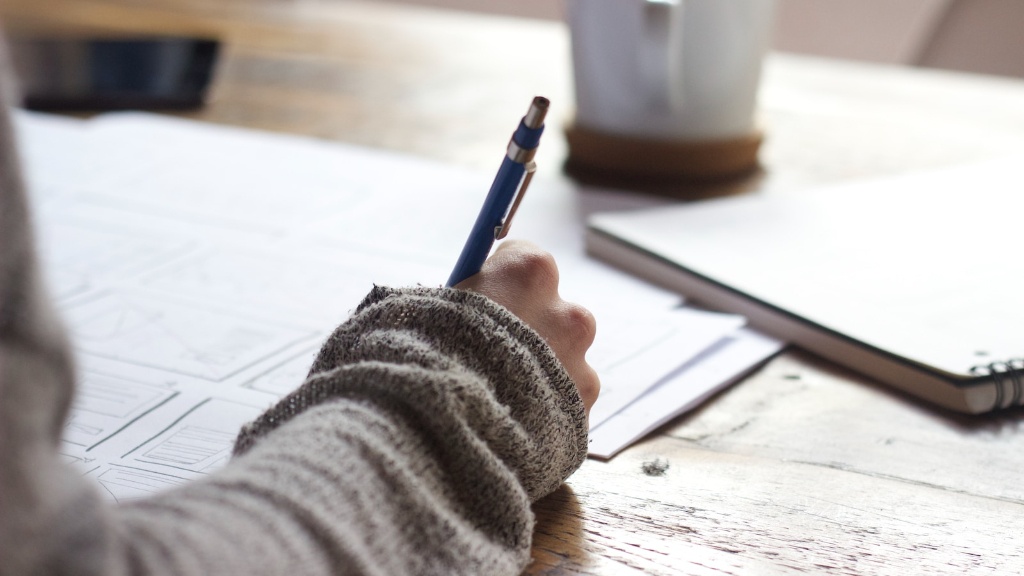Building Confidence for Poetry Reading
Reading poety outloud can be intimidating for many, yet it is a hugely fulfilling experience which can evoke emotion, share stories and entertain an audience. Through building confidence in one’s ability to read their own poetry or the works of others, readers of all ages can generate a powerful reaction from their audience.
Before embarking on a poetry reading, it is important to prepare by learning the poem as much as possible and understanding any special requirements or staging suggestions. A great way to build confidence is to identify and practice any difficult words, understand any recurrent themes and look for any nuances or underlying messages within the poem. Additionally, readers can practice out loud to the best of their ability, in order to: fine-tune any accentuations which will bring the poem to life; to improve accent, volume and pacing; and to ensure the delivery of the poem is as cohesive and fluid as possible.
Developing any background knowledge of the poet, their works or the context of the piece, will also aid in understanding the poem more deeply. Exploring the poem from the poet’s point of view and considering their rhythm and choice of words can offer further insight into the tone and mood of the poem.
Readers should also consider the audience and tailor their performance depending on their age and the poem’s content. Where applicable, explanations on aspects may be beneficial, particularly for younger children. Little anecdotes on the poet and the context of the poems may also help to engage and entertain.
A comforting environment is also needful for building confidence. Domestic environments may help reduce stress and make the experience enjoyable, however readers should manage their own expectations or fears through breathing exercises and visualization. It is also important to remember that mistakes happen and that they can be part of the process.
Sharing Poetry
Gaining knowledge of poetic conventions is a key element of reading poetry out loud. Poems typically use a variety of sound devices, figurative language and rhyme, that can be hard to recognize until practiced. Therefore, readers need to practice them out loud to be able to identify which agreements to make. For instance, the change in pitch or a break in the rhythm between sentences can signify the pause in thought.
Readers should also be aware of the narrative structure within a poem, in order to identify any drama, suspense and changes in direction. Through understanding these components of a poem, readers can better explain the message and meaning.
Although it can be easier to simply go through the poem, poetry readings should not be recitations, but performances. In terms of non-verbal communication, facial expressions, eye contact and body language should be accounted for in order to further engage the audience and support the transition between words. Through creating emotion and atmosphere, a reader’s performance can create a much more powerful response.
Making the Experience Personal
Developing a relationship with the poem beyond simply reciting it is a great way of making it more personal to the reader. Though prior understanding of the content is important, it is ultimately up the reader to make the poem their own. By researching the poet’s life and background, a reader can gain an understanding of the narrator and their own experiences, as well as the poet’s.
Furthermore, readers can make their performance as personal as possible by finding an aspect of the poem which resonates with them and placing emphasis or emphasising a particular phrase through: a change in volume or tone of voice; increased eye contact; varying their gestures or body movement; or creating a period of silence to ask the audience to consider their thoughts.
For those looking to express their own works, student poets can take inspiration from attending readings or gaining a mentor. Through such, poets can understand: the difference between written and spoken word; the power of silence; and the way in which emotions can be expressed through physical movement.
Withstanding Performance Anxiety
It is normal to feel anxious, particularly before a public reading. To combat this, readers should practice relaxation techniques such as deep breathing exercises, muscle relaxation and visualization. Besides calming the nerves, these activities can also increase self-confidence, reduce stress and improve concentration.
At the event, it may also be beneficial for readers to mingle and get to know the audience as much as possible before delivering the poetry. Communicating and engaging with other like-minded people may also help to alleviate any feelings of anxiety.
Equipment and Technical Considerations
In order to ensure a successful reading, it is important to consider and enquire of any technical equipment required. Poetry readers may need to provide a microphone, a speaker or any other equipment. Similarly, readers may need to be aware of religious, cultural and language guidelines or be considerate of intolerances,allergies and vulnerabilities.
Poetry Competitions
For those looking to take their poetry reading to higher level, poetry competitions and open mic nights may offer a great opportunity to do so. By taking part in competitive poetry reading, some readers may gain validation and confidence, in addition to potentially finding new opportunities.
Practice Sessions
Practice makes perfect and it is vitalfor readers to ensure they rehearse their performance as much as possible. Apart from private solo rehearsals, recording and listening back to oneself can give a good indication of how the poem will be heard by the audience. If available, seeking feedback from friends or professional actors can help readers further understand the poem and give meaningful responses on their performance.
Low to High Pace Performance
While it is important to be conscious of the audience’s disposition and energy, reading a poem in an energised way can sometimes be more effective in getting a reaction from the crowd. Using strategically placed pauses and increasing the volume can help make the poem more impactful when sounding out the rhymes and rhythms. Highlighting emphasis words and exploring creative pauses can also add value to the reading.
Merge Poetry and Music
A powerful way to bring more depth to a poem is by merging it with music. Depending on events and appropriate settings, performers may find different music to compliment their poem. Music can add additional emotion and intensity to a work, and can be used, for instance, to lift the energy when reading a poem in a public place.
Mimic the Poet’s Style
To make the experience more authentic, readers should be conscious of the poet’s style. Through looking at the rhyme, rhythm, assonance, alliteration and any other sound devices, as well as the pace, tempo and intonation, readers can imitate the level of flow, emotion and clout of a poem. This can include: mimicking accentuations and action sounds; broadening tongue-twisters; and replicating any peculiar sounds or phrases.


